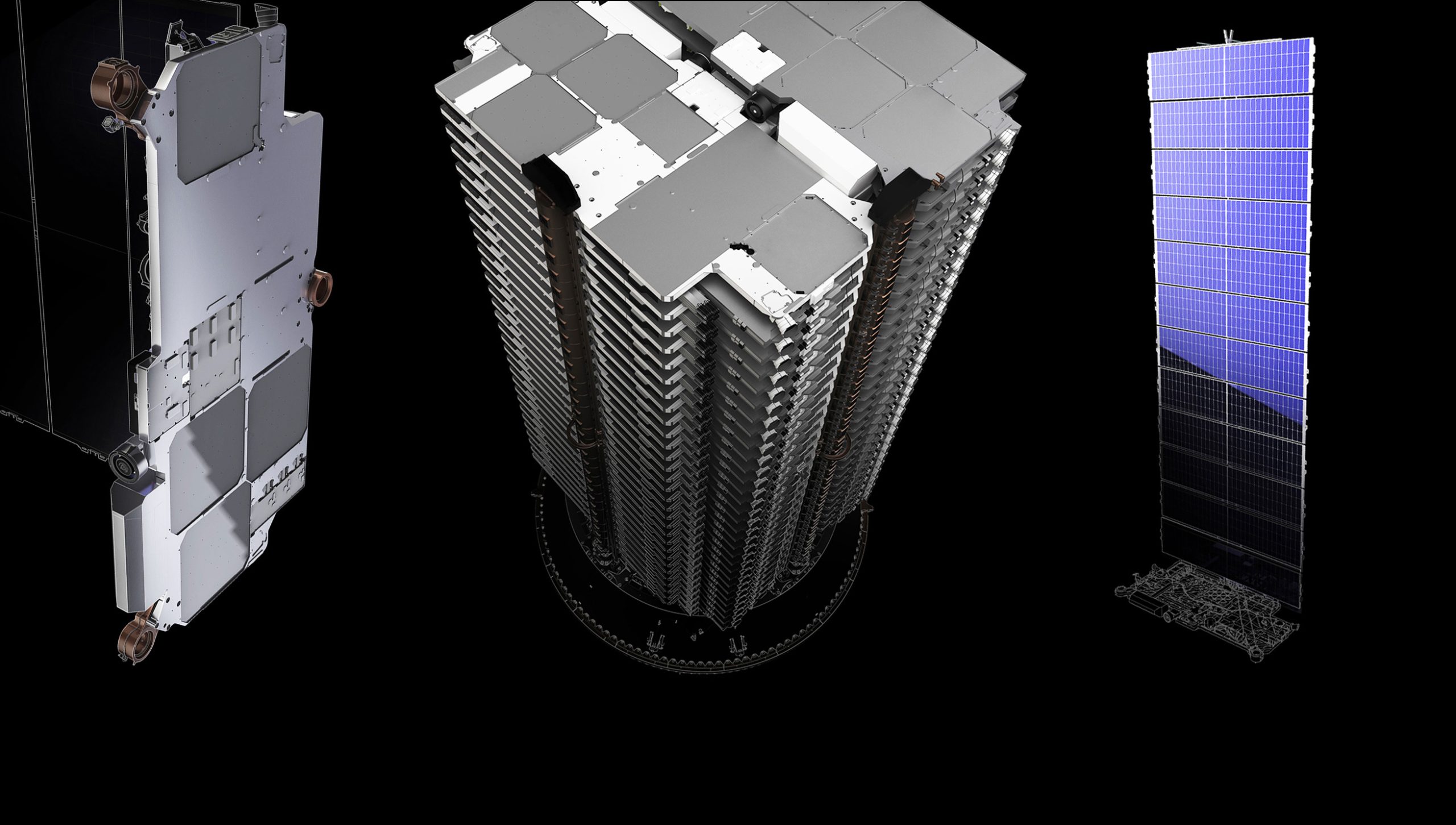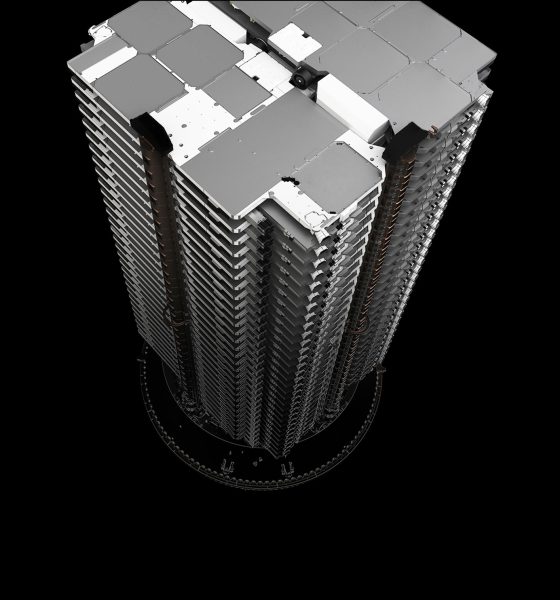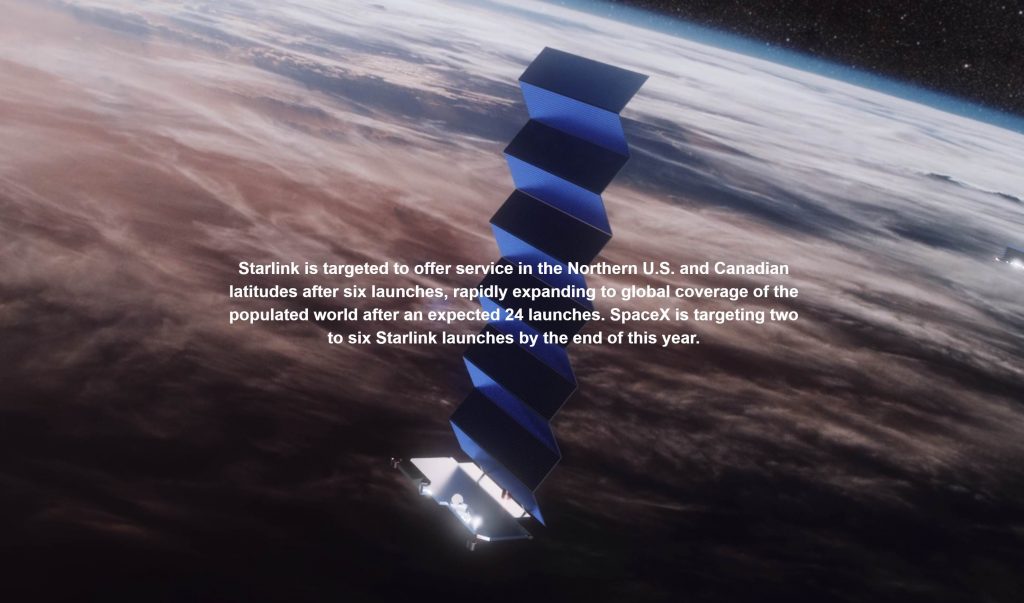

News
SpaceX wants to offer Starlink internet to consumers after just six launches
SpaceX has created a brand new website dedicated to its Starlink satellite constellation, a prelude to offering Internet service to consumers after as few as six launches.
Additionally, Starlink.com reiterated CEO Elon Musk’s estimate that SpaceX will conduct 2-6 dedicated Starlink launches – carrying at least 60 satellites each – in 2019 alone. In other words, a best-case satellite deployment scenario could mean that SpaceX will be able to start offering Starlink service to consumers “in the Northern U.S. and Canadian latitudes” as early as this year, while commercial offerings would thus be all but guaranteed in 2020. A step further, SpaceX believes it will be able to offer coverage of the entirety of the populated world after as few as 24 launches (~1500 Starlink satellites).

“Starlink is targeted to offer service in the Northern U.S. and Canadian latitudes after six launches, rapidly expanding to global coverage of the populated world after an expected 24 launches. SpaceX is targeting two to six Starlink launches by the end of this year.” — SpaceX, Starlink.com
This quiet announcement of SpaceX’s expected initial operational capability (IOC) confirms that the company’s plans to offer communications services to consumers are just as ambitious as its 60-satellite, 18.5 ton (~40,000 lb) Starlink launch debut. Assuming an average of 60 Starlink satellites per launch, SpaceX wants to begin serving customers in the US and Canada as soon as ~360 spacecraft are in orbit, a milestone that could occur as early as late 2019. Sometime in the first half of 2020 is arguably far more likely, but the fact alone that service could be offered in 2019 illustrates just how far SpaceX is ahead of its competitors, of which only OneWeb seems to pose an actual threat.
On February 27th, OneWeb launched its first six satellites – down from a planned ten, already ~20 satellites short of a ‘full’ launch – as a mix between its first orbital test and the first launch of operational spacecraft. OneWeb’s initial constellation will feature 648 satellites, potentially rising to 900 and eventually ~2000 in the years to come, pending commercial success and investor interest. The company currently has plans to begin a monthly launch campaign of ~20 Soyuz rockets no earlier than than August or September 2019, likely completing the first phase of its constellation sometime in 2021.
“OneWeb and its satellite manufacturing partner Airbus Defence and Space have crammed 10 gigabits per second of capacity into spacecraft the size of dishwashers. Tom Enders, Airbus Group’s outgoing CEO, said Feb. 14 that OneWeb satellites cost $1 million each to produce, and that the companies will be able to complete 350 to 400 satellites annually from their joint venture OneWeb Satellite’s $85 million Florida factory opening in April. The first batches of Florida-built satellites should be delivered to OneWeb toward the end of the third quarter, Airbus spokesman Guilhem Boltz said.”
SpaceNews, March 2019
Assuming SpaceX aims to launch one dedicated 60-satellite Starlink mission every 6-8 weeks, the company could easily have a constellation of more than 600 satellites in orbit by the end of 2020. Compared to OneWeb, each Starlink satellite weighs about 40% more (~150 kg vs. ~230 kg) but also offers almost double the usable throughput (~17-20 Gbps vs. OneWeb’s ~10 Gbps). In short, SpaceX should be able to offer the same capacity of coverage and service as soon – if not far sooner – than OneWeb, while constellation hopefuls like Telesat, LeoSat, and Amazon’s Project Kuiper are likely 2-5 years away from launching their first satellites, let alone offering service.

SpaceX’s foray into satellite design
Aside from revealing SpaceX’s tentative schedule for its Starlink service offerings, Starlink.com included excellent, surprisingly detailed renders of satellite hardware, ranging from Dragon-heritage star trackers to the world’s first flightworthy ion thrusters powered by krypton. These renders simply confirm what was already clear: SpaceX has gone against the grain of traditional satellite design at almost every turn, producing a bus (the general structure and form factor) that is unlike almost anything that came before it.



As a complete layperson to spacecraft design, it’s hard to describe SpaceX’s first internally designed satellite bus as anything less than elegant. Thanks to their uniquely flat form factor, the satellites can be packed into a Falcon 9 fairing with extreme efficiency, making SpaceX’s first dedicated Starlink launch the company’s heaviest payload ever at more than 18.5 tons (~40,000 lb). For comparison, OneWeb plans to launch approximately 30×150 kg satellites per Soyuz 2.1 launch with a traditional cylindrical adapter, itself weighing ~1000 kg.
For Starlink, the method the 60 satellites use to securely attach to each other remains a minor mystery, only hinted at by photos and renders that show three metal rings/connectors per satellite. However it works, it appears that SpaceX has found a way to launch and deploy dozens of fairly large spacecraft while wasting little to no mass on a dedicated dispenser. Altogether, it appears that SpaceX has already begun to surpass the technological capabilities of its competitors, while also taking large risks with highly innovative, largely unprecedented design choices. All of those characteristics will help as SpaceX pushes to deploy Starlink and begin serving customers as quickly as possible.
Check out Teslarati’s Marketplace! We offer Tesla accessories, including for the Tesla Cybertruck and Tesla Model 3.

News
Tesla FSD fleet is nearing 7 billion total miles, including 2.5 billion city miles
As can be seen on Tesla’s official FSD webpage, vehicles equipped with the system have now navigated over 6.99 billion miles.

Tesla’s Full Self-Driving (Supervised) fleet is closing in on almost 7 billion total miles driven, as per data posted by the company on its official FSD webpage.
These figures hint at the massive scale of data fueling Tesla’s rapid FSD improvements, which have been quite notable as of late.
FSD mileage milestones
As can be seen on Tesla’s official FSD webpage, vehicles equipped with the system have now navigated over 6.99 billion miles. Tesla owner and avid FSD tester Whole Mars Catalog also shared a screenshot indicating that from the nearly 7 billion miles traveled by the FSD fleet, more than 2.5 billion miles were driven inside cities.
City miles are particularly valuable for complex urban scenarios like unprotected turns, pedestrian interactions, and traffic lights. This is also the difference-maker for FSD, as only complex solutions, such as Waymo’s self-driving taxis, operate similarly on inner-city streets. And even then, incidents such as the San Francisco blackouts have proven challenging for sensor-rich vehicles like Waymos.
Tesla’s data edge
Tesla has a number of advantages in the autonomous vehicle sector, one of which is the size of its fleet and the number of vehicles training FSD on real-world roads. Tesla’s nearly 7 billion FSD miles then allow the company to roll out updates that make its vehicles behave like they are being driven by experienced drivers, even if they are operating on their own.
So notable are Tesla’s improvements to FSD that NVIDIA Director of Robotics Jim Fan, after experiencing FSD v14, noted that the system is the first AI that passes what he described as a “Physical Turing Test.”
“Despite knowing exactly how robot learning works, I still find it magical watching the steering wheel turn by itself. First it feels surreal, next it becomes routine. Then, like the smartphone, taking it away actively hurts. This is how humanity gets rewired and glued to god-like technologies,” Fan wrote in a post on X.
News
Tesla starts showing how FSD will change lives in Europe
Local officials tested the system on narrow country roads and were impressed by FSD’s smooth, human-like driving, with some calling the service a game-changer for everyday life in areas that are far from urban centers.

Tesla has launched Europe’s first public shuttle service using Full Self-Driving (Supervised) in the rural Eifelkreis Bitburg-Prüm region of Germany, demonstrating how the technology can restore independence and mobility for people who struggle with limited transport options.
Local officials tested the system on narrow country roads and were impressed by FSD’s smooth, human-like driving, with some calling the service a game-changer for everyday life in areas that are far from urban centers.
Officials see real impact on rural residents
Arzfeld Mayor Johannes Kuhl and District Administrator Andreas Kruppert personally tested the Tesla shuttle service. This allowed them to see just how well FSD navigated winding lanes and rural roads confidently. Kruppert said, “Autonomous driving sounds like science fiction to many, but we simply see here that it works totally well in rural regions too.” Kuhl, for his part, also noted that FSD “feels like a very experienced driver.”
The pilot complements the area’s “Citizen Bus” program, which provides on-demand rides for elderly residents who can no longer drive themselves. Tesla Europe shared a video of a demonstration of the service, highlighting how FSD gives people their freedom back, even in places where public transport is not as prevalent.
What the Ministry for Economic Affairs and Transport says
Rhineland-Palatinate’s Minister Daniela Schmitt supported the project, praising the collaboration that made this “first of its kind in Europe” possible. As per the ministry, the rural rollout for the service shows FSD’s potential beyond major cities, and it delivers tangible benefits like grocery runs, doctor visits, and social connections for isolated residents.
“Reliable and flexible mobility is especially vital in rural areas. With the launch of a shuttle service using self-driving vehicles (FSD supervised) by Tesla in the Eifelkreis Bitburg-Prüm, an innovative pilot project is now getting underway that complements local community bus services. It is the first project of its kind in Europe.
“The result is a real gain for rural mobility: greater accessibility, more flexibility and tangible benefits for everyday life. A strong signal for innovation, cooperation and future-oriented mobility beyond urban centers,” the ministry wrote in a LinkedIn post.
News
Tesla China quietly posts Robotaxi-related job listing
Tesla China is currently seeking a Low Voltage Electrical Engineer to work on circuit board design for the company’s autonomous vehicles.

Tesla has posted a new job listing in Shanghai explicitly tied to its Robotaxi program, fueling speculation that the company is preparing to launch its dedicated autonomous ride-hailing service in China.
As noted in the listing, Tesla China is currently seeking a Low Voltage Electrical Engineer to work on circuit board design for the company’s autonomous vehicles.
Robotaxi-specific role
The listing, which was shared on social media platform X by industry watcher @tslaming, suggested that Tesla China is looking to fill the role urgently. The job listing itself specifically mentions that the person hired for the role will be working on the Low Voltage Hardware team, which would design the circuit boards that would serve as the nervous system of the Robotaxi.
Key tasks for the role, as indicated in the job listing, include collaboration with PCB layout, firmware, mechanical, program management, and validation teams, among other responsibilities. The role is based in Shanghai.
China Robotaxi launch
China represents a massive potential market for robotaxis, with its dense urban centers and supportive policies in select cities. Tesla has limited permission to roll out FSD in the country, though despite this, its vehicles have been hailed as among the best in the market when it comes to autonomous features. So far, at least, it appears that China supports Tesla’s FSD and Robotaxi rollout.
This was hinted at in November, when Tesla brought the Cybercab to the 8th China International Import Expo (CIIE) in Shanghai, marking the first time that the autonomous two-seater was brought to the Asia-Pacific region. The vehicle, despite not having a release date in China, received a significant amount of interest among the event’s attendees.








